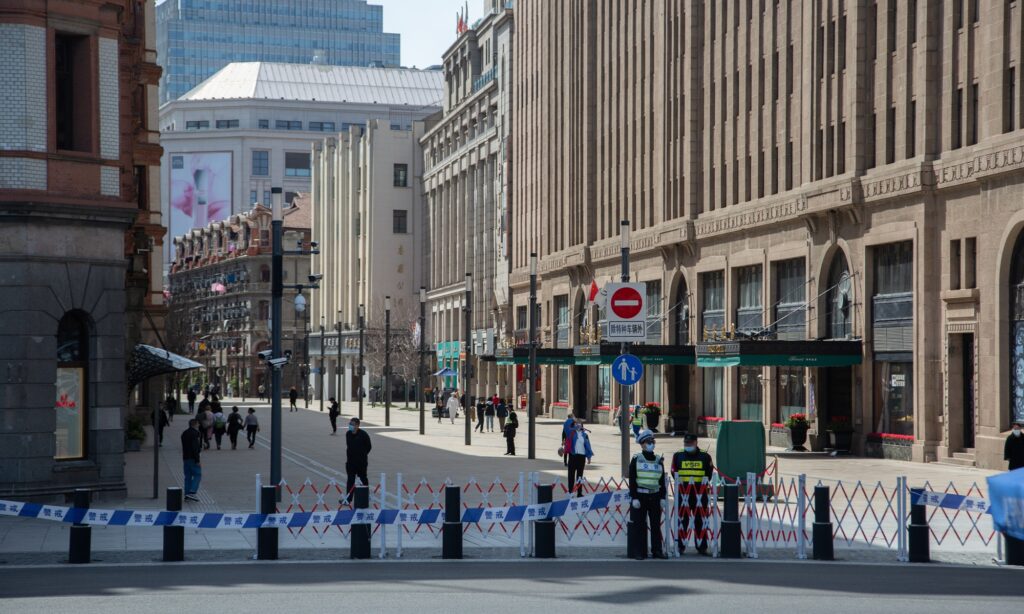A second-round of mass nucleic acid testing will be carried out in Pudong, Punan and neighboring areas in Shanghai starting Wednesday since a certain number of personnel tested abnormal for COVID-19 in the first-round of testing conducted among 9.1 million people in these areas.
Shanghai registered a record high of 326 locally transmitted confirmed cases and a surging number of 5,656 asymptomatic infections on Tuesday, the city’s health authority said during a press conference on Wednesday morning.
Among the 326 confirmed cases, 17 were identified in closed-loop management and 291 were detected in the nucleic acid screening for related people at risk. Among the 5,656 asymptomatic carriers, 5,131 were found in closed-loop management while 525 cases were found in related people at risk.
Since Shanghai began a four-day closed-management of residential communities and suspension of public transportation for mass COVID-19 testing on the eastern side of the Huangpu River since Monday to curb the outbreak, a total of 9.1 million residents in the areas under closed-management have completed nucleic acid testing, according to the health authority. Besides, 10.87 million people in the non-key areas in Puxi which will also be placed under closed-management starting Friday have completed antigen self-tests.
A certain number of personnel who tested abnormal have been found in both the mass nucleic acid testing and antigen self-testing, the health authority said, noting that the mass testing played an important role in cutting off the spread of the virus as soon as possible and curbing the spread of the epidemic.
Thus, a second-round of mass nucleic acid testing will continue to be carried out in the Pudong, Punan and neighboring areas under closed management from Wednesday. A total of 17,000 medical personnel performing sample collection have been organized and 6,300 temporary sample collecting sites have been set up in these areas.
Meanwhile, in order to effectively block the prevention and control loopholes of stranded personnel in roadside shops and some people on the streets, Minhang district has launched district-wide strict control over all the streets in the district between Wednesday morning and the early morning of next Tuesday.
A resident surnamed Yang living in Meilong town in Minhang told the Global Times on Wednesday that quite a few residents in her compound which had been placed under closed-loop management since mid-March had sneaked out to buy vegetables since some roadside shops were still open in the previous days. But she had dropped the idea to go out since the sub-district authority had delivered foods to the doors of residents in the neighborhood.
Besides, Shanghai has improved emergency plans for the collection, transportation and disposal of medical waste, the city’s health authority said. The city has built three centralized medical waste disposal facilities with a total daily capacity of 392 tons. In addition, a self-treatment facility for medical waste with a daily capacity of 12 tons has been built in Shanghai Public Health Clinical Center.
Besides, the city has an emergency disposal of medical waste with the capacity of over 1,000 tons based on the domestic waste incineration facilities.
On Tuesday for example, a total of 544 tons of medical waste was disposed of around the city, of which 10 percent was epidemic-related waste and 48 percent was from centralized quarantine sites.
Only a few people walk along the normally bustling Nanjing Road pedestrian street in Shanghai on March 29, 2022 as the city battles an ongoing COVID-19 outbreak. Photo: Wu Chuanhua/Global Times




